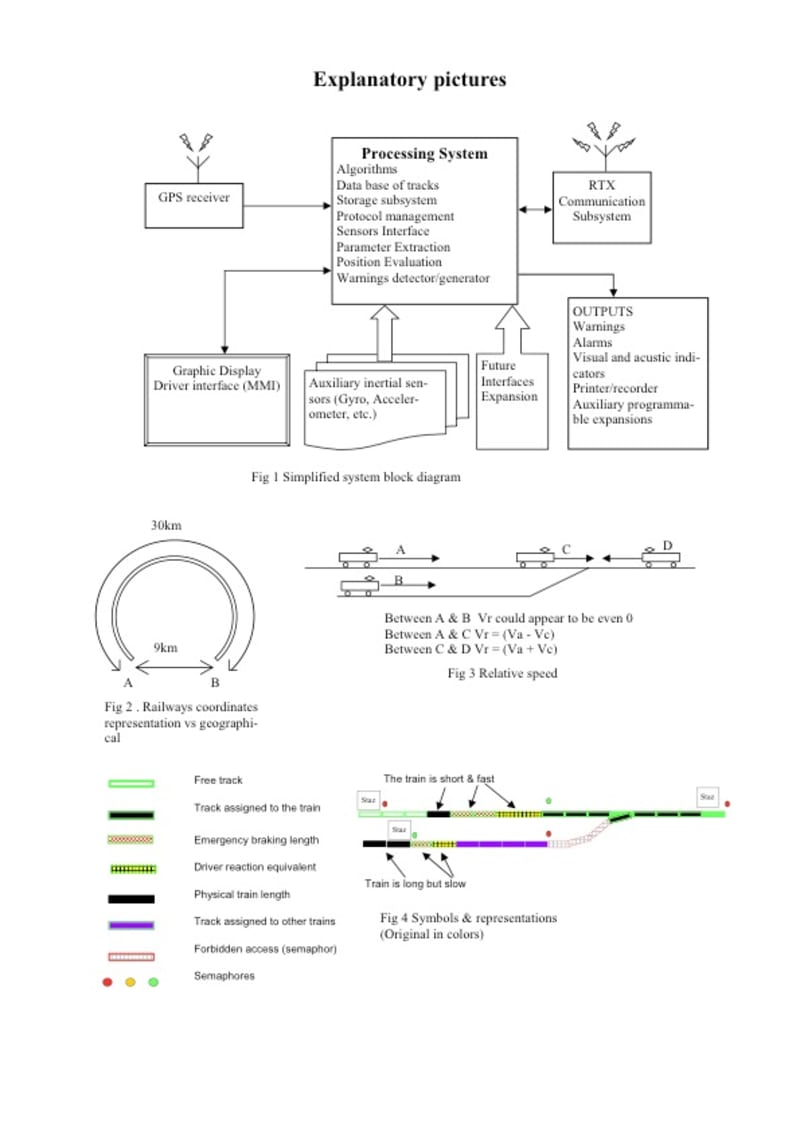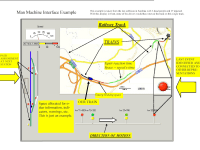An upside-down approach to railway safety.
The modern technology allows development of systems of great complexity and power to manage the railway traffic on wide areas. Despite that, human error is still of great impact in the occurrence of accidents.
Modern railways have benefit of very expensive systems. There are thousands of small railways for which the modernization of the lines is not cost effective. My starting point was: “Give them visibility of what is outside their cabin” a very simple idea not yet implemented. This shoud remove the root cause: the human error of a single man.
Solution implementation description.
Solution can be satisfied with COTS components. See fig 1 for a block diagram.
A graphic display (the MMI) allows viewing a track map with an indication of all the trains moving in the "area of interest," the signals, the crossings, etc. Train's track occupation are represented with a Black portion representing the train, a Red representing the space required to stop using the emergency brake and aYellow portion that shows the space allowed to the driver to take decisions. E.g., train 250 meters long, 1,200 meters to brake at the actual speed and 20 seconds to react to an event before starting an alarm.
Any train will be shown in this way. Anybody has visibility of whether a risk exists or not and all (stations, control centers, trains) are in a position to ring an alarm. The display also shows the sequence of future signals and another section will show the switches positions in the next station. Other indicators will show trip data.
A communication channel is available to allow everybody to have a complete picture of the situation and of the awareness of the others. Any event is presented on the displays and everybody has visibility of who has acknowledged the information. When everybody, in the area of interest, has acknowledged the event, the alert level is lowered because we all know that we are sharing the same information.
A specific protocol has been designed to put together the efficiency of a broadcast system with the robustness of a fully acknowledged exchange of communications.
To provide the above mentioned information we need to get an accurate location of our position. GPS is not always available or reliable in critical areas but provides a “good estimate” of the position. Odometering is known to be of poor validity due to wearing of the wheels, sleepage etc.
Each point along the railways exhibits physical properties (yaw, pitch and roll angles, turning radius, joints, switches, etc) all of these provide a “track signature” that can integrate the GPS signal with great accuracy. Multiple sensors data fusion provides high reliability with commercial grade devices and improves system availability granting a soft degradation in case of failures.
Like this entry?
-
About the Entrant
- Name:Gianantonio Moretto
- Type of entry:individual
- Software used for this entry:NI LabWindows/CVI
- Patent status:patented





